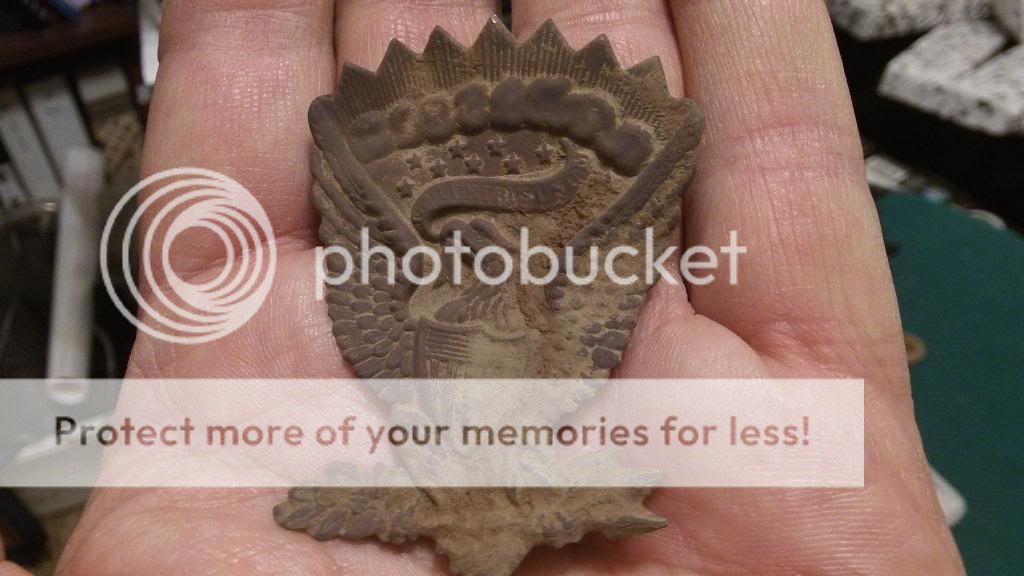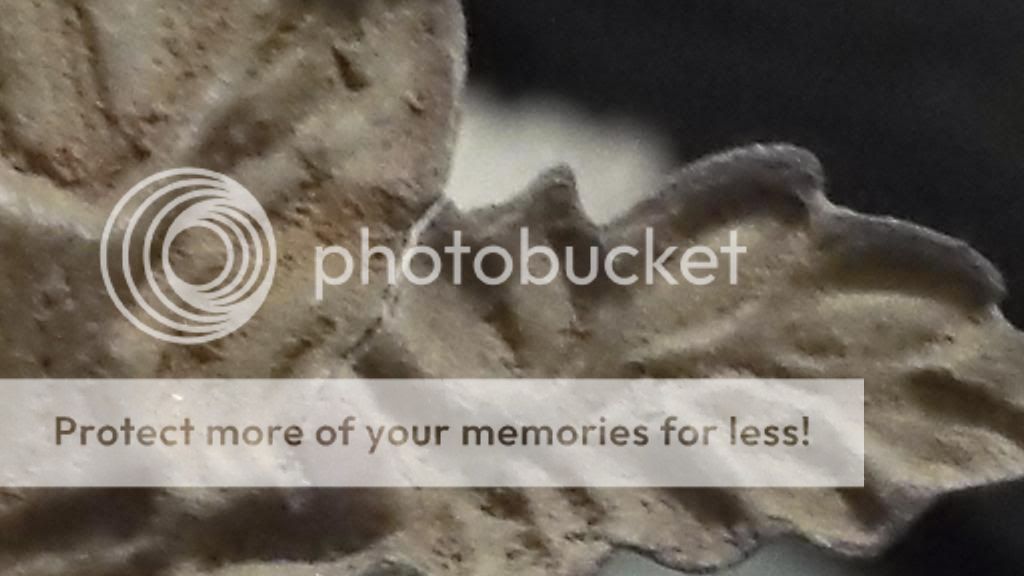Using water to clean brass and copper relics, can sometimes lead to less than favorable results. A
dry toothbrush used to lightly remove much of the surface dirt, is generally a preferred method. Often,"less is more" when cleaning, and a small about of dirt remaining in the recesses and details is actually good, as this can in fact highlight these areas nicely. I would also recommend brushing the dry dirt off onto a sheet of paper, so as to save a small portion of the dirt for the next steps as described.
The crack in this thin stamped piece, would be best sealed, to prevent further breakage. At some point, the slightest bump or mishandling could result in the crack become larger, and possibly even causing the entire olive branch portion to become separated. For the absolute purist, wishing to employ a method that is reversible or removable at some later date (much like the conservation techniques followed by museums), then simple glue that can be thinned and cleaned up with water is the choice. My own preferred product for many years, has been Elmer's School Glue Gel.
Amazon.com: Elmers Washable No Run Gel School Glue: Office Products
For a more durable repair, that will provide a bond in such instances where strength in the piece is a valid concern, then I have used Super Glue Gel (non-reversible, and possibly contrary to some purist conservators).
With either glue choice, carefully clean the area to be repaired, and then use only the very tip of a toothpick to apply a thin line of glue to the crack or break. Even though the glue product used may dry rather clear in appearance, it is best to avoid having the glue cover any more of the visible surface than necessary, as these glues can slightly darken the look of a metal's patina or leave a shiny hue. Final step after gluing, and while the glue is still wet, is to sprinkle some of the dry surface dirt saved earlier, over the surface of the glued repair. The dusting of dirt will help to cover and blend in with the surrounding areas, leaving the repair nearly invisible to the eye.
For one final trick in bringing out the details of the design on various dug artifacts: A simple rub across one's forehead or side of the nose with a finger to pick up a slight bit of oil, and then brushing the finger lightly over the raised details of an artifact, can lead to a pleasing affect, highlighting the piece nicely.
 CC Hunter
CC Hunter








